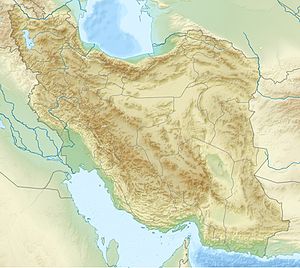History of research
It was first explored by V. E. Crawford in 1963, when very little was still known about the Neolithic age settlements in this area. [1] There are many cultural similarities between Yarim and the nearby site of Tureng Tepe of the same age.
Just like at Tureng Tepe, in the earliest horizon, there occur Jeitun-like ceramics, that are found mostly in the Koppet Dag mountains area, [2] but also at several other contemporary sites in the Gorgan plain, for example in the Hotu cave, and even further west near Behshahr.
In Period I at Yarim Tepe, the Jeitun ware was identified as “Yarim Neolithic”. [3]
This page is based on this
Wikipedia article Text is available under the
CC BY-SA 4.0 license; additional terms may apply.
Images, videos and audio are available under their respective licenses.

